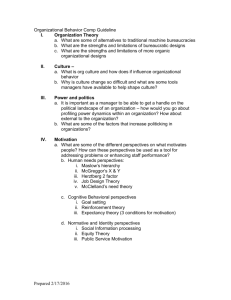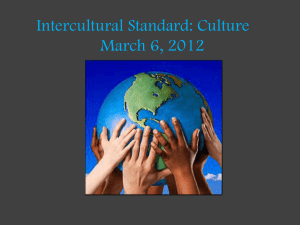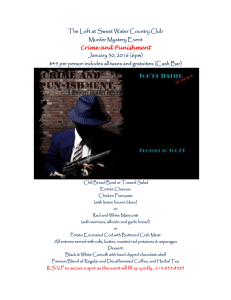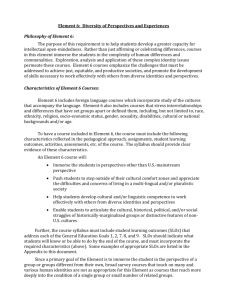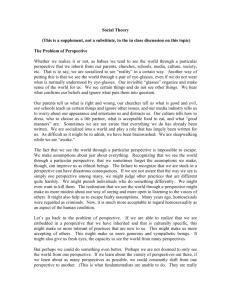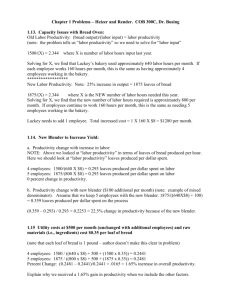Cultural Practices, Products, and Perspectives
advertisement
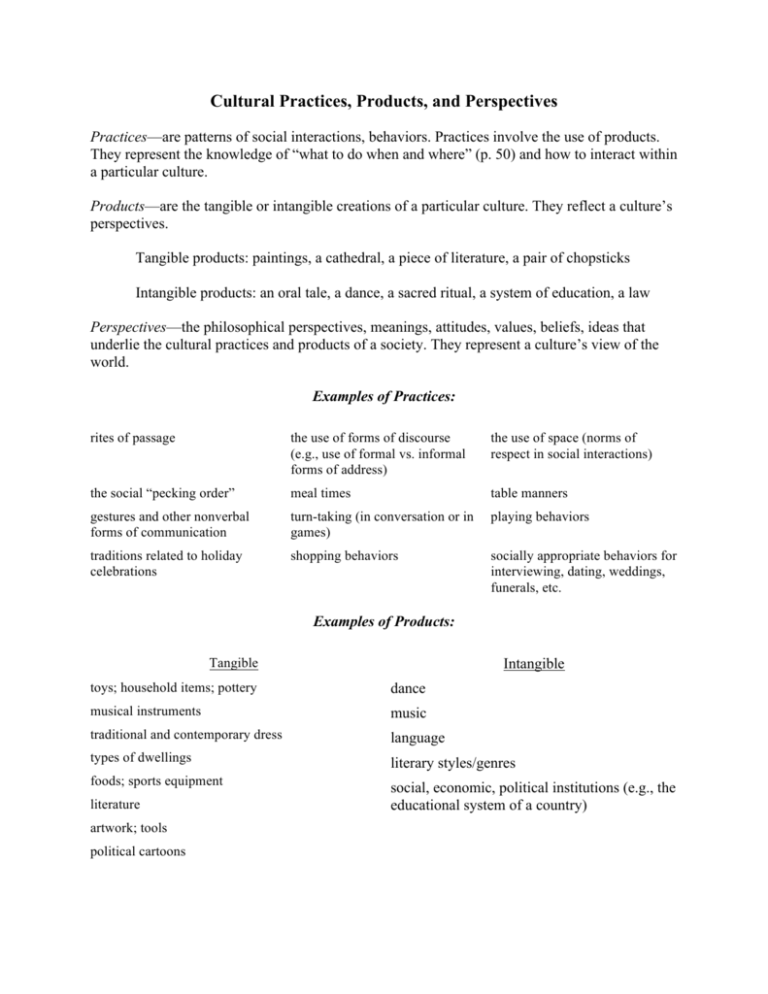
Cultural Practices, Products, and Perspectives Practices—are patterns of social interactions, behaviors. Practices involve the use of products. They represent the knowledge of “what to do when and where” (p. 50) and how to interact within a particular culture. Products—are the tangible or intangible creations of a particular culture. They reflect a culture’s perspectives. Tangible products: paintings, a cathedral, a piece of literature, a pair of chopsticks Intangible products: an oral tale, a dance, a sacred ritual, a system of education, a law Perspectives—the philosophical perspectives, meanings, attitudes, values, beliefs, ideas that underlie the cultural practices and products of a society. They represent a culture’s view of the world. Examples of Practices: rites of passage the use of forms of discourse (e.g., use of formal vs. informal forms of address) the use of space (norms of respect in social interactions) the social “pecking order” meal times table manners gestures and other nonverbal forms of communication turn-taking (in conversation or in games) playing behaviors traditions related to holiday celebrations shopping behaviors socially appropriate behaviors for interviewing, dating, weddings, funerals, etc. Examples of Products: Intangible Tangible toys; household items; pottery dance musical instruments music traditional and contemporary dress language types of dwellings literary styles/genres foods; sports equipment social, economic, political institutions (e.g., the educational system of a country) literature artwork; tools political cartoons Examples of Perspectives: youth valued over age or vice versa importance of individual freedom; independence importance of family the belief that bigger is better valuing of sports/entertainment over education values attached to bilingualism, multilingualism, monolingualism value of having (ownership) belief that humans are part of the natural world and must respect and care for it value associated with personal privacy Examples of the relationship among the three: Whatever the form of a cultural product, its presence within the culture is required or justified by the underlying beliefs and values (perspectives) of that culture, and the cultural practices involve the use of that product. In some Asian cultures, members are positioned (a perspective) on a hierarchical scale based on age, social status, education, or similar variables. In those cultures, the exchange of business cards (a product) that provides key information is a helpful practice. Because the cards facilitate social interaction and are treated with respect in those cultures, one should not scribble another name or phone number on the business card (taboo practice). The information on the card also directly affects the nonverbal behavior (practice) of those involved in the communicative interaction, as well as the choice of linguistic forms (products) that indicate status. In the U.S., youth has traditionally been valued more than old age (a perspective). As a result, products that purport to prolong youth and vitality (e.g., face creams, high fiber breakfast cereals, and fitness equipment) have become an integral part of our culture. At the same time, practices that are perceived as prolonging youth and health are encouraged: school children have physical education to promote physical exercise; many invest in running shoes (products) or join a fitness club (product); some take extreme measures to look younger and have plastic surgery (practice) or wear clothes associated with a younger set (products). In Spain, bread is considered a fundamental part of every meal (perspective). Fresh, long baguette-type loaves of bread (products) are baked and sold daily in panaderías (products). At the table, people break off (rather than slice) pieces of bread from the long loaves and often use the bread to scoop food onto eating utensils (practices). Butter isn’t served with the bread (practice). Source: National Standards for Foreign Language Education Project. (1999). Standards for foreign language learning in the 21st century. Lawrence, KS: Allen Press, Inc.
